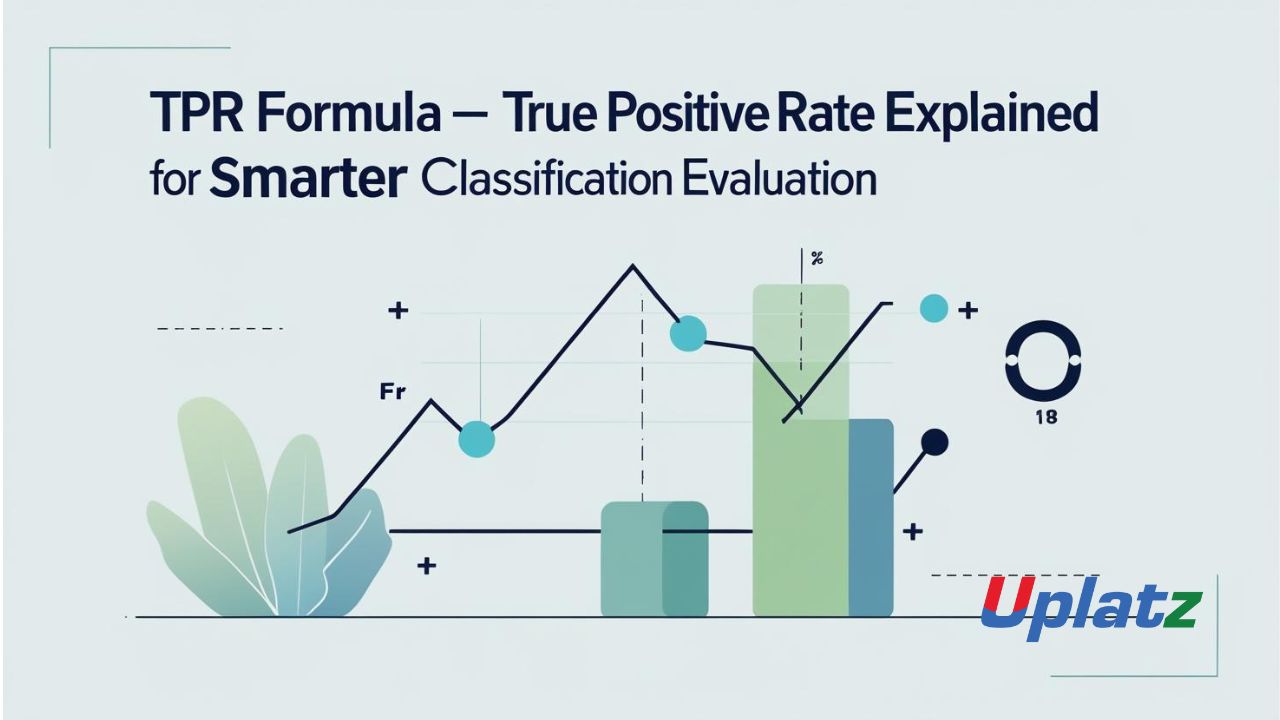 🔹 Short Description:
🔹 Short Description:
True Positive Rate (TPR) measures the proportion of actual positives correctly identified by a model. It’s crucial for evaluating detection success.
🔹 Description (Plain Text):
The True Positive Rate (TPR), also known as sensitivity or recall, tells you how effectively your model captures the positive class. It’s one of the core components in evaluating binary classification performance—particularly in cases where missing a positive is costly.
Formula:
TPR = TP / (TP + FN)
Where:
- TP (True Positives) – Correctly predicted positive instances
- FN (False Negatives) – Actual positives that were missed
This formula gives you the percentage of actual positive cases your model identified correctly. A higher TPR means the model is more successful at catching the positive class.
Example:
Imagine a security system designed to detect intrusions:
- 100 intrusion attempts (positive cases)
- The system detects 92 (TP = 92), but misses 8 (FN = 8)
Then:
TPR = 92 / (92 + 8) = 0.92 or 92%
Why TPR Matters:
True Positive Rate is a core diagnostic metric when evaluating models that must detect rare but critical events—like fraud, disease, or security threats. It’s particularly important when the positive class is rare or imbalanced, and failing to detect it can have serious consequences.
Real-World Applications:
- Medical testing: Ensuring patients with conditions are accurately identified
- Credit card fraud detection: Capturing all possible fraud cases
- Intrusion detection systems: Not missing malicious activity
- Search and recommendation systems: Showing relevant, high-interest items
- Content moderation: Identifying all inappropriate content correctly
Key Insights:
- TPR is the same as sensitivity
- Focuses solely on detecting positives, not how many false alarms occur
- Used to compare models across various thresholds (in ROC curves)
- Essential for imbalanced datasets, where positives are rare
- A perfect TPR is 1 (or 100%), indicating all actual positives were caught
Limitations:
- Doesn’t penalize false positives—you could catch all positives but also misclassify many negatives
- Misleading when used alone—it should be interpreted alongside false positive rate (FPR) and precision
- May lead to over-sensitive models that classify too many cases as positive
The TPR is essential when your goal is to maximize detection of critical events. In domains where missing a positive could result in severe loss or harm, a high TPR is a non-negotiable performance standard.
🔹 Meta Title:
TPR Formula – True Positive Rate to Maximize Detection Accuracy
🔹 Meta Description:
Understand the True Positive Rate (TPR) formula and how it evaluates a model’s ability to correctly detect positive cases. Explore its importance in healthcare, security, and fraud detection where missing positives is not an option.
